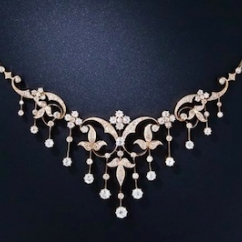Articles and News
Luxury Market Trends For 2015, Part III: Mass Affluents Return; How Americans View Luxury February 03, 2015 (0 comments)

Merrick, NY—Apart from long-term shifts in attitudes toward luxury spending as predicted in Unity Marketing’s most recent study of the market, what else can retailers and brands expect in 2015?
According to an article in Luxury Daily, leading luxury research experts expect a good year, but take nothing for granted.
Bob Shullman, founder and CEO of the Shullman Research Center in New York, says the luxury world started 2014 optimistically, and he predicts 2015 to be even better. While those in upper income and very wealthy households have continued to buy luxuries in recent years even as others scaled back—and will continue to do so—luxury in 2015 stands to gain from a return of mass market adults dipping into the market for an occasional splurge or “affordable” luxury as they did prior to the recession.
“At the heart of our confidence are the many improvements to the American economic environment in 2014 (the declining unemployment rate, the large drop in oil and gasoline prices, the highest level of consumer confidence in many years, the higher rate of growth in the GDP), all leading to our economy being on a definite upswing,” he told Luxury Daily. “That, in turn, should result in consumers spending more on their families and themselves during 2015 compared to 2014; assuming, of course, that no truly negative and distracting events occur.”
Globally speaking, the United States will be the star of the luxury industry, said Milton Pedraza, CEO of the Luxury Institute in New York, but while the United States is the most resilient market in the world, it’s not immune to the world economy—especially Russia, China, and Brazil—and that will have an impact.
“We will always see single digit growth across most categories,” he said. But there’s a lot of competition and he predicts 2015 may well be the year when clear winners and losers emerge.
David Friedman, president of Wealth-X in New York said ultra-high net worth individuals’ lifestyle tends to be, for the most part, immune from large macroeconomic gyrations. “Between 2013 and 2014, ultra-high net worth [individuals’] purchases as a share of total luxury market increased from 17% to 19%. We expect this to remain broadly similar in 2015.”
Separately, Luxury Daily also identified strategic differences in how Americans define luxury vs. their counterparts in China, the next market most luxury brands are actively pursuing.
Americans interact with luxury brands on a more daily basis than consumers in China. But U.S. consumers tend to view luxury more broadly—a category of products and services with high prices—rather than on a brand-by-brand basis. Agility Research & Strategy’s “Luxury Consumption Survey — China slows but US booms” found that instead of citing, say, a BMW as a luxury brand, Americans call entire categories like jewelry, vacations, homes, and automotives luxury if they fit their expectations of quality, comfort, and pampering. Chinese consumers, on the other hand, focus on exclusivity as a marker of luxury and are less concerned with paying the lowest possible price for the product.
Still, Americans do immediately associate certain brands with luxury. A recent study conducted by Shullman Research Center found that while luxury truly is in the eyes of the consumer, of the 90 or so words respondents used to describe what luxury meant to them personally, 20 words frequently recurred: cars, classy, costly, craftsmanship, desirable, excessive, exclusive, expensive, high-end, high-price, jewelry, name-brand, nice, non-essential, overpriced, premium, quality, special, top-of-the-line, and unaffordable.
Interestingly, of those 20 words, only two represent product categories: cars and jewelry. The rest, all descriptive terms, include both positive and negative. The number-one word association was “expensive,” followed by “quality.” Not surprisingly, women were more likely to name-associate jewelry with luxury.
When asked to name brands they associate with luxury, respondents again singled out about 90 different names, with about 20 names repeatedly occurring. Of these, three—Cartier, Tiffany, and Rolex—were for jewelry or watches. Other brands on the list, such as Chanel, Ralph Lauren, and Gucci, also offer fine jewelry and/or watches, but these are not the brands’ iconic product categories.
Most of the brands named (Bentley, BMW, Bugatti, Cadillac, Cartier, Chanel, Coach, Ferrari, Gucci, Jaguar, Lamborghini, Lexus, Louis Vuitton, Mercedes-Benz, Prada, Ralph Lauren, Rolex, Rolls-Royce, Tesla, and Tiffany) are fairly old brands and only one-fourth of them are American.
Status is more important to consumers in China than the United States: 56% of Chinese respondents say it matters that others recognize the brands they wear as luxury, whereas only 42% of American respondents said the same. 86% of Chinese respondents vs. 51% of Americans say exclusivity is essential to buying a luxury product.
One in two Chinese consumers say it’s important to get the best price when buying a luxury brand; but here, that ratio shifts up sharply, as three out of four Americans will seek the lowest possible price for a luxury brand.
Top image: Lang Antiques







